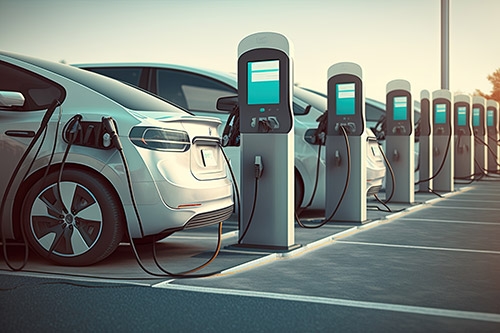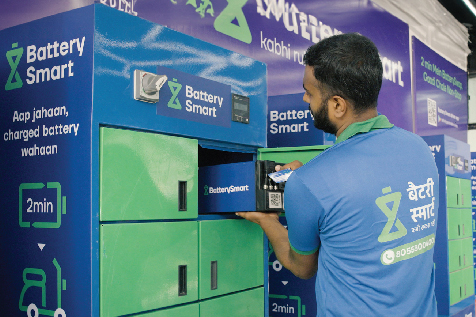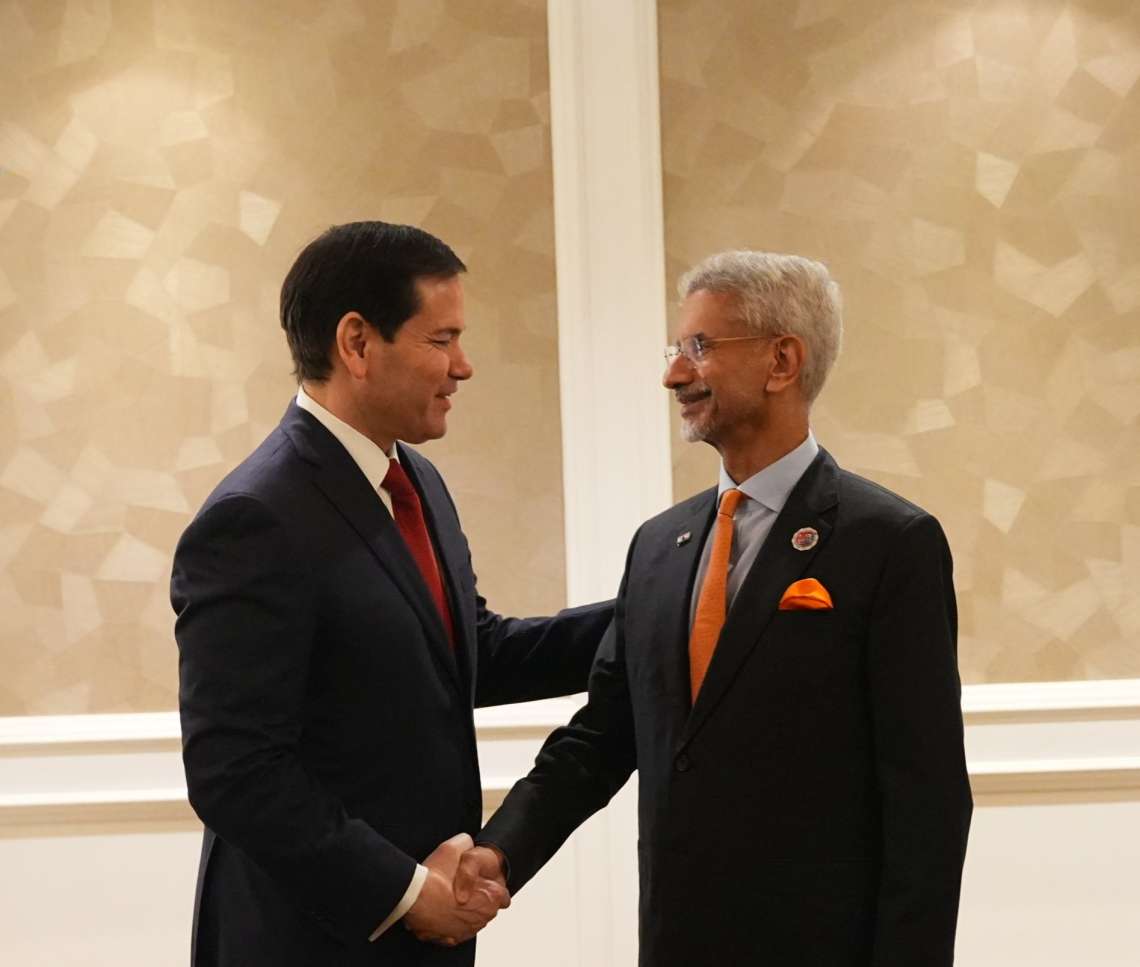Emerging as a key player in the global EV shift, India is leveraging its unique challenges to reshape the industry and drive new manufacturing and marketing trends…reports Asian Lite News
The Indian automotive market is undergoing rapid evolution, fuelled by urbanization, rising incomes, and an expanding middle class. This dynamic sector encompasses a wide range of vehicles, from two-wheelers to passenger cars. A noticeable shift is underway, as many two-wheeler owners aspire to upgrade for improved comfort, safety, and status. Simultaneously, India’s automotive industry is experiencing a seismic shift with electric vehicles (EVs) at the forefront. As global concerns regarding climate change and environmental degradation intensify, EVs are becoming crucial for sustainable mobility.
India is emerging as a key player in this global transition, leveraging its unique set of challenges and opportunities. This combined transition, with the rise of EVs, is reshaping the industry and influencing both manufacturing trends and marketing strategies. Automakers are strategically targeting this evolving customer base, aided by government initiatives like the “Make in India” campaign and EV incentives. As the sector continues to develop, the shift from two-wheelers to passenger vehicles and the adoption of EVs will be pivotal in shaping the future of mobility in India.
This article delves into the trends, technological innovations, policy and regulation impacts of electric vehicles, examining how India can become a global leader in the automotive world.

Market Trends and Predictions
The Indian electric vehicle (EV) market exhibits a promising growth trajectory, poised to advance at an unprecedented pace over the forthcoming decade. Projections indicate a noteworthy compound annual growth rate (CAGR) of 36%, propelled by a convergence of factors including governmental incentives, diminishing costs of EV components, and heightened consumer awareness regarding the advantages of electric mobility. The passenger vehicle market in India experienced significant growth during the pre-COVID years due to increasing urbanization. For example, the urban population rose from 32.7% in 2015 to 34.5% in 2019. Alongside this, passenger vehicle production increased from 3.09 million units in FY 2014 to 4.03 million units.
The surge in consumer adoption of EVs in India is evident, fuelled by several compelling factors. These include the allure of lower total cost of ownership (TCO), supportive governmental policies, and an escalating consciousness of environmental imperatives. Particularly discernible within urban locales, where air pollution stands as a pressing concern, this transition is underpinned by a growing acknowledgment of the enduring economic benefits in terms of fuel savings and maintenance expenses, notwithstanding the initial higher acquisition costs of EVs. Furthermore, the diverse array of available models, ranging from affordable electric scooters to upscale electric vehicles, caters to a wide spectrum of consumer preferences.
Significant regional disparities exist in the adoption rates of EVs across India. Predominantly, major metropolitan hubs such as Delhi, Mumbai, Bengaluru, and Hyderabad spearhead this movement owing to superior infrastructure, augmented disposable incomes, and heightened environmental consciousness. Nonetheless, the potential for EV adoption in tier-2 and tier-3 cities is still considerable and warrants attention. These regions are experiencing a burgeoning interest, particularly considering the government’s emphasis on nurturing smart cities that integrate sustainable mobility solutions.

India passenger vehicle has shown significant growth during the pre-COVID years owing to the increasing urbanization in the country, such as in 2015
Technological Advancements in focus:
Battery Technology:
India is swiftly advancing its battery technology, pivotal for its expanding EV ecosystem. Breakthroughs in battery chemistry, notably lithium-ion and upcoming solid-state variants, promise superior energy density, faster charging, and prolonged lifespan. The establishment of battery manufacturing plants, championed by the ‘Make in India’ initiative, aims to significantly reduce costs and enhance supply chain resilience. Moreover, exploration into alternative materials like sodium-ion and zinc-air batteries holds promise for future innovations. Aligned with the National Mission on Transformative Mobility and Battery Storage, efforts are underway to foster large-scale battery manufacturing plants. This drive has sparked international collaborations, with Suzuki Motor Corporation, Toshiba Corporation, and Denso Corporation partnering with Indian counterparts like Maruti Suzuki to inaugurate lithium-ion battery facilities in Gujarat.
Domestically, heavy investments from corporate giants like Tata Group and Reliance Industries underscore the nation’s commitment to battery technology. Tata Chemicals is spearheading the establishment of a lithium-ion battery plant, while Reliance is dedicated to pioneering advanced battery materials. Synergies between research institutions and industry stakeholders drive innovation, with the Indian Space Research Organisation’s transfer of lithium-ion cell technology further catalysing progress. These initiatives solidify India’s position as a frontrunner in electric mobility and underscore its potential to lead the global transition towards sustainable transportation.
Charging Infrastructure:
Expanding charging infrastructure is pivotal piece of the puzzle for widespread EV adoption. India’s government, under initiatives like FAME (Faster Adoption and Manufacturing of (Hybrid &) Electric Vehicles), prioritizes building a robust charging network. Fast-charging stations along major highways and in urban hubs are underway, exemplified by plans for the Delhi-Jaipur highway and installations in Bengaluru and Mumbai. Public-private partnerships are driving expansion efforts. Tata Power and municipal collaborations are deploying stations across cities, while Bharat Petroleum integrates charging into its petrol pump network. These partnerships aim to ensure nationwide accessibility.

According to the Indian Economic Survey, India would require INR 371,8 trillion infrastructure investment by 2040. A large part of this infrastructure investment would need to be focused on urban India which includes transport infrastructure as well, by 2030, 38% of the country’s population, or 600 million people would reside in cities. India Gross Domestic Product (GDP) per Capita reached INR 1,91,724.6 in March 2022 compares to INR 1,62,673.5 in March 2021 and expected to reach around INR 9,91,508.4 by 20247 driven by strong economic growth.
Innovations like wireless charging and battery swapping add convenience. Battery swapping stations, for instance, promise quicker charging and alleviate range anxiety. India’s future charging infrastructure vision integrates seamlessly into urban environments. Smart charging, renewable energy integration, and technological optimization are priorities. The goal is an efficient, sustainable charging network supporting widespread EV adoption, aligning with India’s commitment to a cleaner transportation future.
Policy and Regulation Impact:
India has made significant headway in promoting electric vehicles (EVs) through incentives like FAME India and stringent emission standards (BS VI). However, further action is needed to truly accelerate EV adoption. The government should prioritize streamlining the permitting process for setting up charging stations, making it easier for both public and private entities to invest in infrastructure. Additionally, establishing clear standards for charging infrastructure will ensure seamless compatibility across different EV models, reducing “range anxiety” and encouraging wider EV use. Exploring and incentivizing battery swapping stations, particularly for two- and three-wheelers where charging times can be a significant barrier, is another potential avenue.
Looking beyond infrastructure, robust regulations for battery recycling and waste management are crucial to ensure environmental sustainability throughout the EV lifecycle. Investing in skilling and workforce development initiatives will create a qualified workforce for EV maintenance, repair, and manufacturing, addressing potential service gaps and ensuring a smooth transition for the automotive sector. Finally, crafting a long-term and predictable policy framework for EVs will provide clear visibility for investors and manufacturers, encouraging long-term investments in EV technology and infrastructure development.
Building on existing strengths, the government should continue to review and refine incentive programs like FAME India to ensure they remain effective in addressing evolving market needs. Additionally, prioritizing the development of a robust public charging network, particularly in urban areas and along major highways, will overcome range anxiety and encourage long-distance travel in EVs. Finally, launching targeted consumer awareness campaigns to educate the public about the benefits of EVs and address concerns about range, charging infrastructure, and overall life-cycle costs is essential for widespread adoption. By taking these action-oriented steps alongside existing initiatives, India can significantly accelerate the adoption of electric vehicles and solidify its position as a leader in the global transition towards sustainable mobility.

Looking Ahead: A Global Leader in the Making?
Buoyed by a rising GDP and a burgeoning middle class, India is positioned for a transformative journey in the automotive industry. This economic boom presents a unique opportunity to address the growing demand for personal transportation in a sustainable and innovative way. The “Make in India” initiative is at the core of this transformation, fostering domestic EV manufacturing and innovation. The surge in EV patent filings by Indian companies and the government’s push for indigenous battery production are testaments to this commitment. Collaboration between industry leaders, academia, and international partners is also crucial. Joint ventures with global automakers will not only reduce costs but also facilitate technology transfer and the localization of advanced manufacturing processes, propelling India’s EV technology to a globally competitive level.
India’s strategic positioning as a hub for EVs is further bolstered by its vast and growing middle class, creating a compelling domestic market. Combined with its skilled workforce and strategic location, India is becoming an attractive destination for global EV manufacturers seeking to expand their reach. This strategic positioning is further solidified by India’s potential as a major export hub for EVs and components. Leading global manufacturers are taking notice, establishing production facilities within the country. Additionally, India’s unwavering focus on leveraging renewable energy sources like solar and wind power creates a clean and sustainable ecosystem for EVs. Looking ahead, India must focus on accelerating EV adoption through government support and incentives, building a robust charging network, and investing in R&D for advanced battery technology and domestic manufacturing. A sustainable and user-centric approach, with diverse ownership models and advanced features, will be central to attracting consumers and securing India’s position as a global leader in the future of electric mobility.
The future of electric vehicles and the broader automotive industry in India is bright, marked by continuous innovation, supportive policies, and growing consumer interest. Overcoming the challenges facing the industry will require collaboration among government bodies, industry stakeholders, and academic institutions. As India positions itself as a global leader in the automotive world, the country’s EV market will play a crucial role in shaping a more sustainable and efficient transportation landscape. By staying at the forefront of these developments, automotive professionals in India can drive the transition towards a cleaner, greener future. India’s journey towards electric mobility is not just about technology, but also about creating a sustainable ecosystem that benefits the economy, the environment, and society at large.
ALSO READ-EU to slap higher tariffs on Chinese EVs














